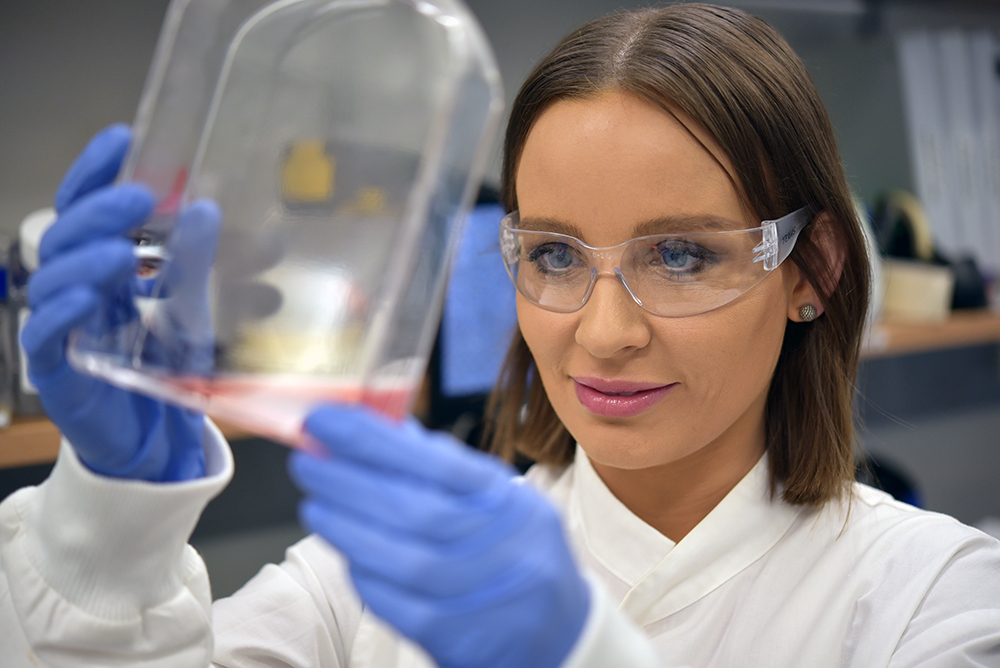
A pioneering team at the Australian Institute for Bioengineering and Nanotechnology (AIBN) has developed a groundbreaking assay that swiftly measures interactions between microscopic particles in the bloodstream. This innovation marks a pivotal advance in understanding the mechanisms of diseases like cancer, which rely heavily on these interactions for development and spread.
Traditionally, scientists have depended on laborious and intricate methods to study these particle behaviors. These methods often required multiple experiments, costly equipment, and could take up to a week to yield results. However, a revolutionary technique known as lipoprotein association fluorometry (LAF) now promises results within just one hour.
Revolutionizing Disease Research with LAF
LAF was developed by AIBN PhD student Raluca Ghebosu, under the guidance of Associate Professor Joy Wolfram from AIBN and the School of Chemical Engineering. This technique employs a fluorescent dye that ceases to glow when particles interact, akin to detecting a “molecular handshake,” allowing researchers to observe real-time interactions and their extent.
“In the past, studying these interactions meant days of lab work and highly specialized equipment,” Ghebosu explained. “It’s a simple idea that opens new doors to biological questions once too slow, expensive, or complex to tackle.”
The Role of Extracellular Vesicles
Extracellular vesicles (EVs) are nanoscale particles released by cells, carrying proteins, fats, and other molecules between cells to facilitate communication, damage response, and balance maintenance. In diseases like cancer, the behavior of EVs, particularly their interactions with other particles such as lipoproteins, can change significantly.
Associate Professor Wolfram emphasized the importance of these interactions: “Our bloodstream is full of these tiny particles, and while they play an important role in normal physiology, they can behave very differently in disease.”
A New Link Between Cancer and Cholesterol
Utilizing LAF, the team discovered an unexpected connection between metastatic cancer and cholesterol. EVs from metastatic cancer cells, which are responsible for spreading cancer, were found to bind more strongly to LDL and VLDL particles—commonly referred to as ‘bad’ cholesterol—than EVs from healthy or less aggressive cells.
“This suggests cholesterol might play a much bigger role in cancer progression than we previously thought,” Raluca noted. “It gives us a starting point to explore therapies that might block this interaction and potentially slow the spread of cancer.”
The notion that cholesterol could influence metastasis is still emerging. The LAF assay provides a potent tool to further investigate this link, offering new avenues for cancer research and potential therapies.
Global Impact and Future Prospects
The LAF assay has already been validated by international collaborators and is attracting commercial interest. Wolfram highlighted the significance of this achievement: “To see this kind of progress during the early stages of a PhD is rare. Raluca has developed a powerful tool that’s already reshaping how we approach cancer research, and this is only the beginning.”
Ghebosu expressed her motivation: “Being able to contribute something meaningful at this stage of my PhD—and see it potentially helping global cancer research—is incredibly motivating. It’s taught me how much design matters.”
With its adaptability and efficiency, LAF is poised to enter the rapidly expanding diagnostics and nanomedicine markets, reflecting AIBN’s mission to translate world-class science into real-world solutions.
The discovery was supported by the University of Queensland’s Frazer Institute, the School of Chemical Engineering, and the Australian Institute of Tropical Health and Medicine at James Cook University. As the LAF technique gains traction, it promises to revolutionize the way researchers approach the study of cancer and potentially other diseases, offering hope for faster, more effective therapies in the future.







